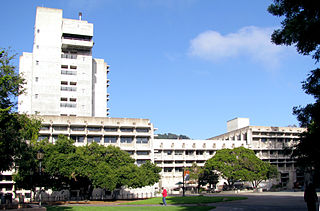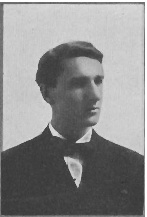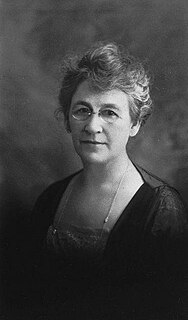Related Research Articles

Julia Morgan was an American architect and engineer. She designed more than 700 buildings in California during a long and prolific career. She is best known for her work on Hearst Castle in San Simeon, California.
Charles Willard Moore was an American architect, educator, writer, Fellow of the American Institute of Architects, and winner of the AIA Gold Medal in 1991. He is often labeled as the father of postmodernism. His work as an educator was important to a generation of American architects who read his books or studied with him at one of the several universities where he taught.

Bernard Ralph Maybeck was an American architect in the Arts and Crafts Movement of the early 20th century. He was an instructor at University of California, Berkeley. Most of his major buildings were in the San Francisco Bay Area.

Thomas Dolliver Church, also known as Tommy, was a renowned and innovative 20th century landscape architect based in California. He is a nationally recognized as one of the pioneer landscape designers of Modernism in garden landscape design known as the 'California Style'. His design studio was in San Francisco from 1933 to 1977.

The College of Environmental Design, also known as the Berkeley CED, or simply CED, is one of 14 schools and colleges at the University of California, Berkeley. The school is located in Bauer Wurster Hall on the southeast corner of the main UC Berkeley campus. It is composed of three departments:
Allan B. Jacobs is an urban designer, renowned for his publications and research on urban design. His well-known paper "Toward an Urban Design Manifesto", written with Donald Appleyard, describes how cities should be laid out.

William Wilson Wurster was an American architect and architectural teacher at the University of California, Berkeley, and at the Massachusetts Institute of Technology, best known for his residential designs in California.

The campus of the University of California, Berkeley and its surrounding community are home to a number of notable buildings by early 20th-century campus architect John Galen Howard, his peer Bernard Maybeck, and their colleague Julia Morgan. Subsequent tenures as supervising architect held by George W. Kelham and Arthur Brown, Jr. saw the addition of several buildings in neoclassical and other revival styles, while the building boom after World War II introduced modernist buildings by architects such as Vernon DeMars, Joseph Esherick, John Carl Warnecke, Gardner Dailey, Anshen & Allen, and Skidmore, Owings and Merrill. Recent decades have seen additions including the postmodernist Haas School of Business by Charles Willard Moore, Soda Hall by Edward Larrabee Barnes, and the East Asian Library by Tod Williams Billie Tsien Architects.
Irving Foster Morrow was an American architect best known for designing the Golden Gate Bridge.
Clarence William Whitehead Mayhew was an American architect best known as a designer of contemporary residential structures in the San Francisco Bay Area. Recognition came to him with a home designed in 1937 for the Manor family in Orinda, California; one which was included as an example of modern architecture's effect on the contemporary ranch house in California in several post-war published compilations of residential works.

Edwin Lewis Snyder was an architect and pioneer in the use of Spanish Colonial Revival Style architecture, building homes in Northern California for decades from the early to mid-twentieth century. The Snyder-designed Berkeley Community YWCA, built in 1930, is on the city's historical register; the Roy O. Long Co. Building, built in 1927, is on the California Historical Resources Inventory. Along with Frederick L. Confer, Snyder designed several “western colonial” homes during the depression. Snyder designed the 7,700-square-foot (720 m2) Alpha Delta Pi sorority house in Berkeley, excluding architect’s fees, the English cottage style structure was made for $27,500.
Vernon Armond DeMars was an American architect and professor at the UC Berkeley College of Environmental Design. He specialized in Modernist housing projects and public housing complexes.

Donald Sidney Appleyard was an English-American urban designer and theorist, teaching at the University of California, Berkeley.

The Donald and Helen Olsen House, in Berkeley, California, was built in 1954.
Frank Milton Tyler was an American architect.

Etcheverry Hall is a building on the UC Berkeley campus that houses the departments of mechanical, industrial, and nuclear engineering of the UC Berkeley College of Engineering. Etcheverry Hall is named after Bernard A. Etcheverry, professor of irrigation and drainage from 1915–51, who later served as chair of the Department of Irrigation and Drainage from 1923–51. Built in 1964, it is located on the north side of Hearst Avenue, across the street from the main campus.
Donlyn Lyndon is an American Third Bay Tradition architect and the Eva Li Professor Emeritus of Architecture and Urban Design at the University of California, Berkeley. Lyndon was a co-designer of Sea Ranch, California.
Olson House may refer to:
Gertrude Comfort Morrow was an American architect who frequently collaborated with her husband, Irving Morrow.

Hazel Wood Waterman (1865–1948) was an early 20th century American architect working in an Arts and Crafts—inspired style in southern California. She undertook the first major renovation of Estudillo House, which is one of the oldest surviving examples of Spanish architecture in California.